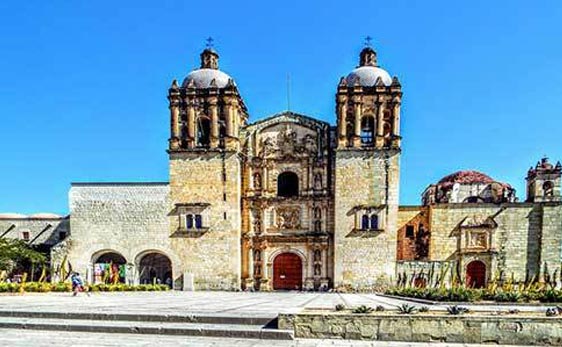One of Mexico’s Greatest Cultural Gems
By Don Murray
One of the most important things to know about Oaxaca is how to correctly pronounce the name. The first glimpse of the word is enough to numb your brain, so here it is: (wah-HAH-kah). Derived from the ancient Aztec language, the name has gone through several revisions over more than 1,000 years, as is typical of the cities and towns of Mexico.
Oaxaca is a mountainous and highly indigenous state on the southernmost west coast of Mexico. Oaxaca de Juarez (normally shortened to Oaxaca) is the state capital and largest city in the state. Conversations about Oaxaca are anchored in context to be sure of the subject location.
Bordering the Pacific Ocean, the state of Oaxaca offers some spectacular, rocky, and mostly inaccessible coastline as well as being home to a large population of Zapotec and Mixtec peoples. The terrain across the state is rugged, filled with steep mountain peaks and deep valleys serving to isolate groups and greatly inhibiting, what may have been, a normal mix of cultures. The economy of the state is primarily based on agriculture however most is intended for personal use rather than commercial sales. Corn is the primary crop but beans, peanuts, and chocolate are also popular. Livestock holdings are primarily pigs with cattle and chickens following closely behind.
Although the coast of Oaxaca is, indeed, rugged with much inaccessible, the area known as Huatulco has, for generations, been a successful tourist area known for its numerous gorgeous, calm bays and stunning beaches.
Oaxaca City (Oaxaca de Juarez)
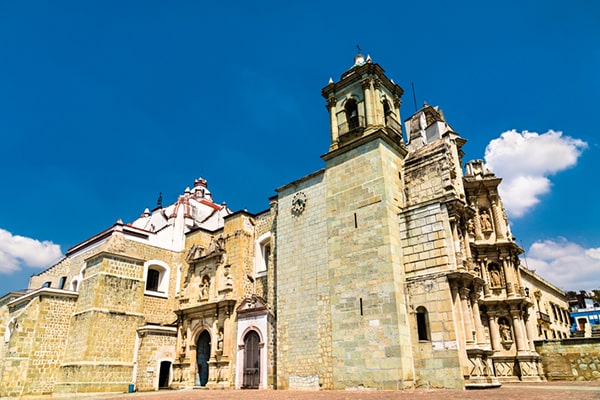
Meandering through the streets of this ancient, historic city provides a colorful feast for your eyes as indigenous women, draped in colorful hand-woven fabrics, tend their small stores and go about their daily lives. It’s easy to find yourself diverted, from wherever you were going, as the sounds of ancient language and the aromas of regional cooking waft through the air, pulling you into one of the many small, family-run restaurants.
Nestled in the foothills of Mexico’s Sierra Madre range, is the rich cultural center of Oaxaca de Juarez, the largest city in Oaxaca and also its capital city. With a vibrant artisan community, blending locals with international painters, jewelers and sculptors, weavers, and designers, Oaxaca City now draws tourists from across the globe to wander through small galleries, stores, and museums. And Oaxaca is also a culinary center. Here, the importance of good food rivals the arts community for attention.
If you want to feel, taste, smell, and hear history, as if you were there when it originally happened, you absolutely must visit Oaxaca, one of Mexico’s historic crown jewels. In fact, you may want to join a growing number of expats who now call Oaxaca home.
Sitting at 5,000 feet above sea level, Oaxaca’s climate is dry most of the year and pleasantly warm, from about 75 F to 80 F. It does get warmer during the hottest month of April, reaching into the low 90s F. While generally dry, it rains in the summer months, with June being the wettest.
Oaxaca’s Colonial-era architecture, ancient ruins, and cobblestone streets are the backdrop for the local Zapotec and Mixtec indigenous people, who have inhabited this region for thousands of years. In fact, Oaxaca City was named a World Heritage Site in 1987. The architectural sites of the ancient centers of Mitla and nearby Monte Alben are popular tourist attractions and their popularity significantly contributes to Oaxaca’s local economy, now heavily reliant on tourism.
Outside the historic areas, the city is still growing. Oaxaca City offers modern supermarkets in addition to the large and traditional open markets in the central area. There is also a major brand big-box retailer, glitzy auto dealerships, shopping malls, and cinemas. Oaxaca even has an international airport and new hotels to support the growing tourism industry.
Oaxaca City is very affordable, with expats reporting that total monthly expenses can run from as little as $900 upwards of $1,500, including rent. But these same expats say that Oaxaca isn’t the easiest community for expats to live. Speaking Spanish is essential. Not perfect Spanish but functional Spanish.
The city has become a center of social activism over the last decade. Local teachers have been a force in the region, going against modern education and wanting to maintain only indigenous schooling. There are some permanent protest displays in city parks with parades and spontaneous roadblocks to maintain attention on the issue. Those who live in Oaxaca have come to embrace the passion of the protestors with the same zeal that they accept the passion of the resident artisans.
Wonderful food, vibrant art, historic dance, ancient cultures, and a bit of civil activism blend together to make Oaxaca City one of those places that will permanently etch itself into your senses.
Retire in Oaxaca

Mexico has a couple of simple, straightforward visas for retirees; the first is a Temporary Resident Visa and the second is a Permanent Resident Visa. Both permit full-time residency in Mexico but there are some significant differences such as income requirements, employment legalities, and automobile importation.
Visitors arriving by air and spending less than 180 days in Mexico need only possess a valid passport. No visa required. Those who drive across the border require a separate auto permit as well as an immigration form issued at the border.
The generous 180-day period permitted to air travelers allows all those snowbirds to make repeat, annual visits without worrying about a visa, as long as they do not exceed the 180-day limit. If you wish to remain longer than 180 days, you must apply for a visa.
Begin your visa quest at the Mexican Consulate in your home state or any other Mexican Consulate in your home country. There, the consulate officer will review your completed application; verify your income based on the documents you provide, review a nominal number of other documents, and your completed application. After a short interview, if approved, you’ll likely depart with your residency visa affixed to the inside of your passport.
All legal residents over the age of 60 qualify for a discount card from INAPAM (Instituto Nacional para las Personas Adultas Mayores) facilitating discounts on a wide variety of goods and services.

Get Your Free Mexico Report Here:
Learn more about Mexico and other countries in our daily postcard e-letter. Simply enter your email address below and we'll send you a free special report - Why Millions of Americans Are Moving to Mexico.
This special guide covers real estate, retirement and more in Mexico and is yours free when you sign up for our postcards below.
Medical Care in Oaxaca

The medical needs of Oaxaca’s 255,000 people are well tended by three major hospitals and a good number of doctors and dentists in the area. Like all of Mexico, costs for medical care are significantly cheaper than costs north of the border, generally only 25% to 30% of what you would expect to pay in the States.
Permanent residents may participate in the national healthcare program which, at the time of this writing, is under major revision. The emerging plan promises that all will be covered similar to Canadian healthcare but full details are not yet available. The current political administration has said that the new program will take two years to implement.
Lifestyle in Oaxaca
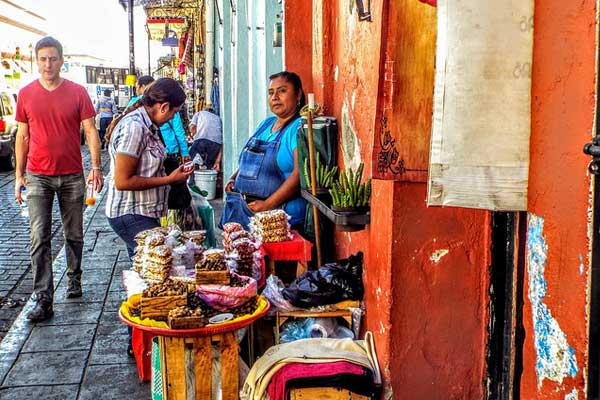
Life in Oaxaca is truly a life in Mexico. If the expat population in Oaxaca has made any impact on the area, it is not as readily visible as it is in locations like San Miguel, Chapala, or the Riviera Maya. Spanish, and several indigenous dialects make up the local languages. English is very rarely spoken so those spending time in Oaxaca best be prepared.
The local food scene showcases numerous types of mole, a thick, complex sauce, typically served with meats. It can take hours or days to prepare these creations and families guard their recipes. Wandering the streets will expose you to dozens and dozens of restaurants, large and small, each touting their versions of various mole recipes.
Artisans have determined that Oaxaca provides the right feel for the creative juices to flow. Painters, weavers, and sculptors work in small studios throughout the city and a number of museums display local work.
Weaving, in particular, is a craft known to this area for more than 1,000 years. The quality of woven goods from this area is world-renowned.
The area in and around Oaxaca de Juarez is rich in native culture including arts, food, and architecture. A walk down the cobbled streets and lanes of the central historic district allows the history to seep through your soles and into your soul.
Drive the short distance to the weaving village of Teotitlan del Valle. This tiny village, nestled at the base of a mountain, has a weaving history that dates back centuries. Sheep are sheared and the wool is hand-carded, spun into yarn, and hand died before being woven into fabric or one of their world-famous rugs. Intricate patterns are memorized and have been handed down for centuries, done now as they were 800 years ago.
Spend the day exploring the ancient ruins of Mitla and Yagul and when you return, settle into one of the many wonderful restaurants for chicken mole. I can spend almost a full day at the central mercado, a gigantic open market filled with the sights, sounds, and aromas of the foods, cheeses, and fermented beverages of these indigenous people. You may want to try the chapulines (small grasshoppers) that are seasoned, fried, and available by the basket load.
And of course, you must try the local mezcal (I did after my plate of chapulines). Both tequila and mezcal are made from the harvested core of the agave plant, otherwise known as the “piña.” However, that’s where the similarities in production end. Tequila is typically produced by steaming the agave inside industrial ovens before being distilled two or three times in copper pots. Mezcal, on the other hand, is cooked inside earthen pits that are lined with lava rocks and filled with wood and charcoal before being distilled in clay pots. While some large-scale mezcal producers have adopted modern methods, artisanal mezcal makers continue to use this more traditional method, which is the source of the smokiness commonly associated with mezcal. Also, the name Tequila is a nationally protected trademark and can only be produced in very limited regions of Mexico.

Get Your Free Mexico Report Here:
Learn more about Mexico and other countries in our daily postcard e-letter. Simply enter your email address below and we'll send you a free special report - Why Millions of Americans Are Moving to Mexico.
This special guide covers real estate, retirement and more in Mexico and is yours free when you sign up for our postcards below.
Is Oaxaca Safe to Live in?
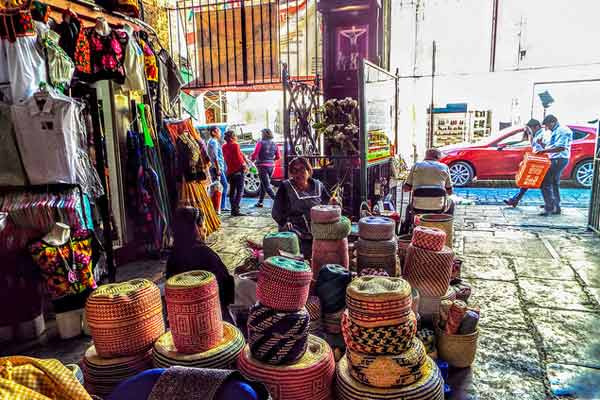
When looking at statistics, Oaxaca is one of the safest states in Mexico. The capital, Oaxaca de Juarez, promotes a friendly, small-town vibe that is not intimidating at all. If tourists and residents, alike, take the usual precautions, the chances of experiencing crime are low. Like anywhere else, don’t flash expensive items such as jewelry, cameras, or phones. Don’t carry all your credit cards as you walk around and leave your passport somewhere safe. Many carry a copy of important documents rather than the original. Common sense would dictate not to walk alone on the beach at night. Stick to the well-lit areas and you should have no problems.
Cost of Living in Oaxaca
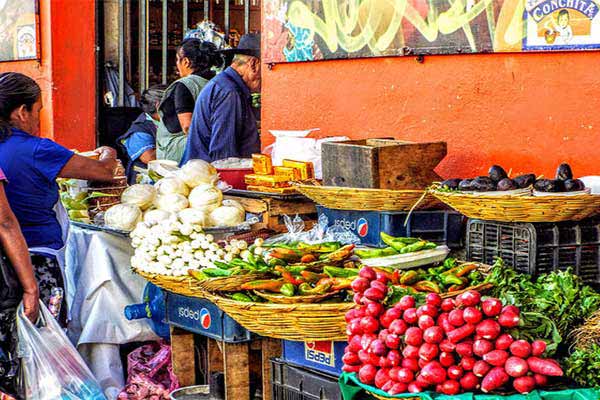
Mexico consistently offers a much lower cost of living when compared to a similar lifestyle, north of the border. Here is an example budget for a couple living in Oaxaca:
| Expenses | U.S. $ |
| Rent (two-bedroom apartment) | $600 |
| Utilities | $60 |
| Groceries | $325 |
| Entertainment | $250 |
| Housekeeping | $100 |
| Medical | $150 |
| Transportation (car, gas, insurance) Optional. | $100 |
| Transportation (public) | $45 |
| Monthly Total: | $1,630 |
Things to Do in Oaxaca
By Sharon Kurtz
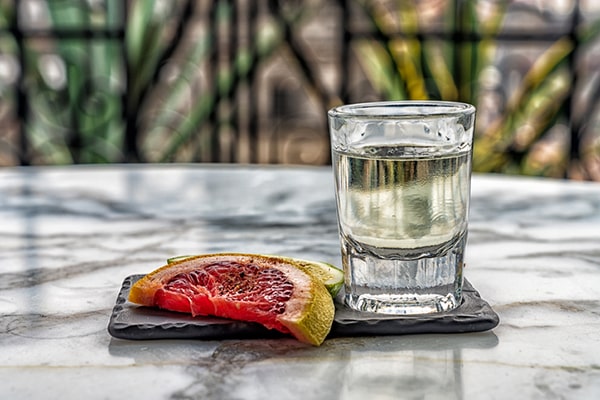
To visit Oaxaca is to experience Mexico’s best, both old and new, with an extraordinary aura felt by all who favor the State for its climate, culinary and artistic traditions, landscapes, and biodiversity.
The Colonial capital city offers virtually everything within walking distance of downtown, including crumbling 17th-century architecture, courtyards, and shaded zocalos.
From its charming central plaza to baroque churches, art galleries, and museums, Oaxaca is the cornerstone of indigenous culture. Its vibrant markets offer everything from colorful carpets and pottery to huipils and alebrijes, Oaxaca’s celebrated carved wooden animals.
The flavor: traditional Mexican. Oaxaca’s diversity and energy have been melded from ancient civilization’s Mitla ruins to Oaxaca’s colonial past remnants. Overlooking all, Monte Alban, Mesoamerican’s first metropolis that still reigns from its mountain top throne. The traditions of the indigenous cultures have inspired visitors from all over the world to explore Oaxaca.
1. Oaxaca Cathedral
The Cathedral of Our Lady of the Assumption, located on the edge of the zocalo on Oaxaca’s main square, is framed by a lovely plaza, a welcome respite from the summer’s heat. Dating back to 1535, the ornate Church has continued to evolve through several modifications, additions, and a major rebuild after an earthquake in 1714 caused severe damage – while always remaining an Oaxaca icon.
2. Templo de Santo Domingo
The 18th-century Church and former monastery are dripping with gold, featuring an ornately painted ceiling and baroque architecture. The Church’s opulent decorative interior includes more than 60,000 sheets of gold leaf.
Outside of the Church is a large plaza, making this ancient Templo a modern-day Oaxacan cultural hub. The Church also houses an accompanying museum brimming with pre-Columbian artifacts. You can explore the peaceful cloisters of the old monastery.
3. Ethnobotanical Garden
The botanical garden encompasses 2.32-acres on the former monastic grounds of the Church of Santo Domingo. The ethnobotanical garden is an example of Oaxaca’s unparalleled biodiversity and features numerous cacti and other vegetation variations. It offers a glimpse into Mexico’s most biodiverse regions and details the role of native floral in the region’s cultural and ecological development.
The earliest evidence of plant domestication of squash and corn in the Americas was found in Oaxaca.
4. Hierve el Agua
The two stunning petrified waterfalls at Hierve el Agua result from centuries of calcium-rich flowing springs that are now literally set in stone. The waterfalls, whose name translates to “boiled water,” resemble cascades of frozen water that run off the cliffs into the valley below.
Freshwater springs, oversaturated with calcium carbonate and other minerals, formed these unique pools that overlook the blue-green mountains beyond the cliff edge. The site has numerous hiking trails and is a 90-minute drive from central Oaxaca City.
5. Mitla Archeological Site
Mitla is a famed Mesoamerican archaeological site in the Tlacolula Valley, 24-miles southeast of Oaxaca City. It is one of Mexico’s best-known ruins and the most important of the Zapotec culture. It is famed for its intricately carved fretwork mosaics, slotted together perfectly without any mortar as pieces of a puzzle. Mitla, which means ‘underworld’ in Zapotec, was established as a sacred burial site long before the Christian Era.
6. Monte Albán
Monte Alban is a large pre-Columbian archaeological site a short distance from the Oaxaca city center and was continuously inhabited for over 1,500 years by Zapotec, Mixtec, and Olmec peoples. A UNESCO site, it includes several ancient pyramids, an observatory, and a ball court that have withstood the centuries, 1300-feet above the valley floor. Construction on this ancient Zapotec capital began in 500 BC and was abandoned in 800 AD for unknown reasons. Later, the Mixtecs used the area as a burial site for their elite.
7. Day of the Dead
Dia de Los Muertos is a cause for a celebration where families welcome back their deceased relatives’ souls for a brief reunion. The unique custom is celebrated each year between October 31st and November 2nd.
Living family members treat the deceased as honored guests in their fiestas and merrymaking. Favorite foods and other offerings are left at the gravesites. Its rituals are rife with symbolic meaning, where festivities unfold over two days in an explosion of color and life-affirming joy.
Amazingly intricate ofrendas or alters covered with candles and marigolds can be found in homes and all over the city to welcome the dead.
8. Artisanal Mezcal
Mezcal is a spirit steeped in heritage and culture in Oaxaca. A distilled spirit made from many agave varieties by using their perfectly ripe pinas or agave hearts. First, they are fire-roasted in an underground pit, wild-fermented in open vats, and then distilled, imbuing the elixir with a delightfully smoky, complex taste. Small farmers produce the liquor by hand, using traditional methods developed in primitive distilleries known as palenques. A common Oaxacan saying illustrates just how central a role mezcal plays, “Por todo mal, mezcal, y para todo bien, tambien,” which roughly translates to “Mezcal is for the all the good times and the bad.”
9. Mercado de Tlacolula
Tlacolula is a traditional market that has been taking place since the Zapotec and Mixtec times, situated 45-minutes east of Oaxaca City. The artisans and farmers shut down the streets to set up a Sunday market full of handicrafts, produce, and—this being Oaxaca—food stalls. Don’t miss the delicious barbacoa.
I visited the market on Sunday preceding the Day of the Dead festival. The market was abuzz with local shoppers, preparing for the holiday, purchasing flowers and candles to decorate their loved ones’ gravesites.
10. Teotitlán del Valle
Easily the most recognizable name for iconic Oaxacan folk art, Teotitlán del Valle is best known for handicrafts and natural dyed wool tappets, or rugs woven on hand-operated looms, using wool sheared from local sheep.
The Village was founded in 1465 and is best known as a Zapotec hub, famed for a weaving culture that uses historical Zapotec designs. The name Teotitlán comes from Nahuatl and means “land of the gods.” Visit the Monday morning Mercado. The artisans, dressed in traditional embroidered and colorful huipil, sell their handicrafts, from trinkets to masterful works of fine art and everything in-between.
11. Mercado de Benito Juarez
Mercado Benito Juarez, named after the country’s first indigenous president, is also one of the State’s most famous and frequented indoor markets. It’s a must for food lovers in Oaxaca.
Known for stocking a wealth of produce that is key to Oaxacan cuisine, it is popular with chefs and aspiring cooks across the region. They stock up on stringy Oaxaca cheese, specialty meats, and freshly squeezed fruit juices and tortillas. The must-try at this market is the famous chapulíne (grasshopper) tacos.
12. Alebrijes Sculptures
The most recognizable handicrafts produced in Oaxaca are undeniably the vibrant, delicate, and surprisingly lightweight alebrijes, beautifully strange, curious things born of Artisans’ imagination. According to the Zapotec culture, these little wood carvings – often shaped like mythical creatures or vaguely surreal animals carved from copal wood – are representations of spirits.
13. Glazed Local Pottery
Oaxaca has a heritage of creating handmade, glazed pottery still used in everyday life. Several towns in the State produce variations of these artisanal one-of-a-kind pieces. The famous highly polished black Barro Negro pottery is from the San Bartolo Coyotepec region of Oaxaca, distinguished by its color, sheen, and unique designs.
You can find the Barro Rojo (red pottery) in San Marcos Tlapazola at the Tlacolula market and the traditional Barro Verde (green pottery) in Santa María Atzompa, known principally for unique, natural green glazed pottery.
14. Molé, Mexico’s National Dish
Oaxaca is known as “the land of seven molés.” Molé (pronounced mo-LAY) is the State’s most famous sauce and its undisputed national dish. The thick, rich sauce is made from as many as thirty ingredients ground together, slow-simmered, and served with meats that include pork and turkey.
Each of the State’s seven regions’ distinctive sauces offers unique variations, each containing some combination of nuts, fruit, and chili. Saved for special occasions, Molé Negro, the most famed of Oaxaca’s molés, is the darkest color with complex flavors that include chocolate.
Conclusion:
Travel to Oaxaca is to experience the best of Mexico and a city that should be on your must-see list if you have a yearning for a unique experience. Wherever you wander in this rich land, you’ll find excitement, friendly people, and a host of traditional Mexican delights.

